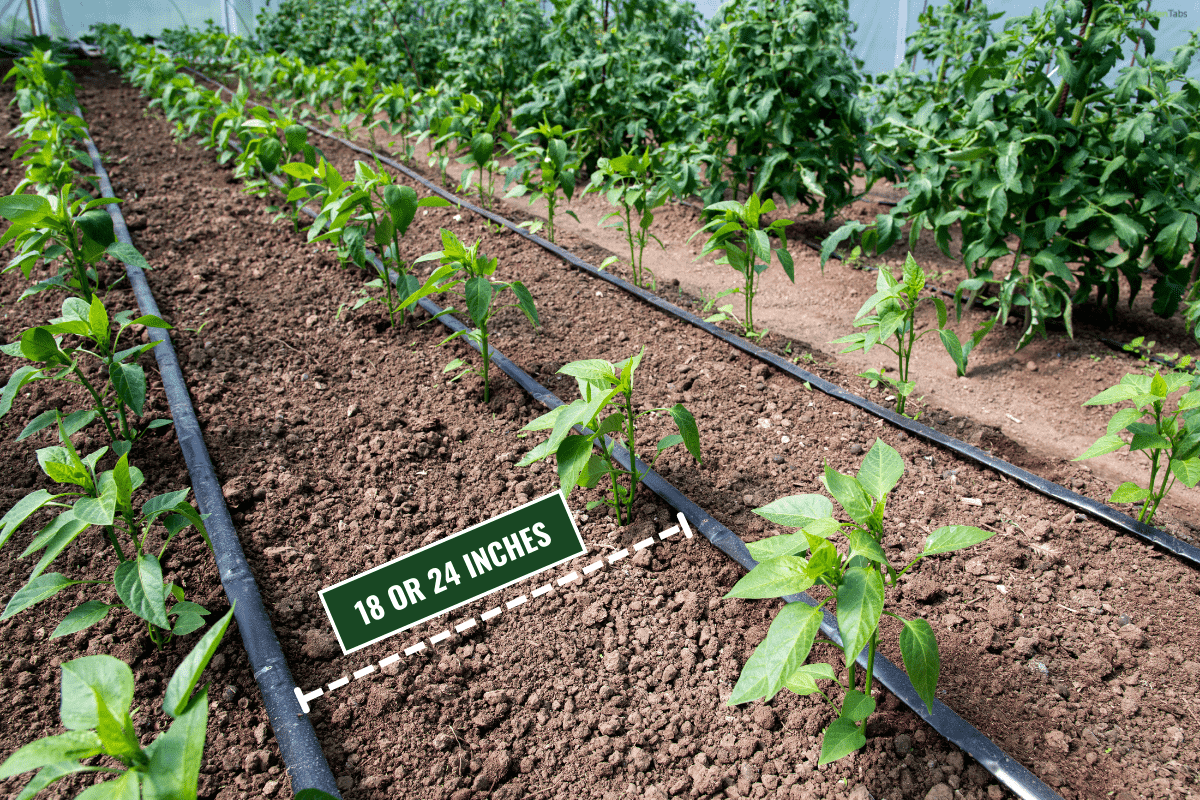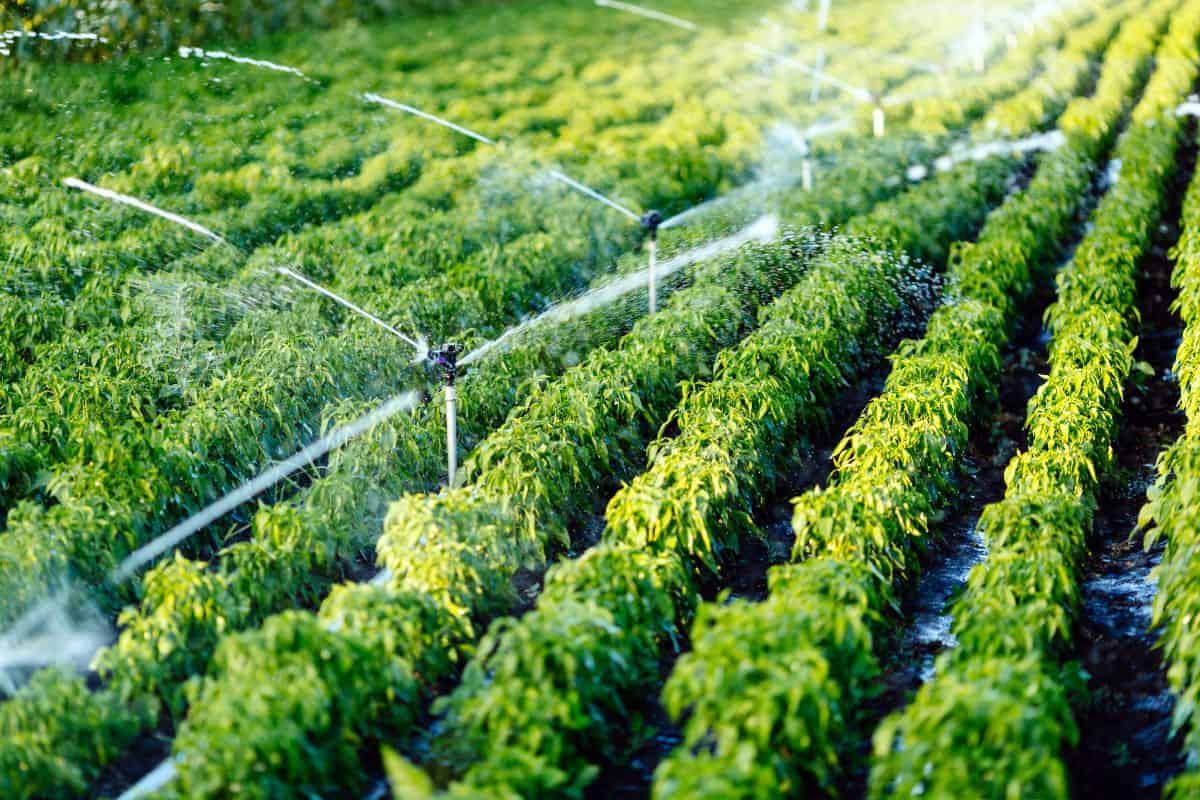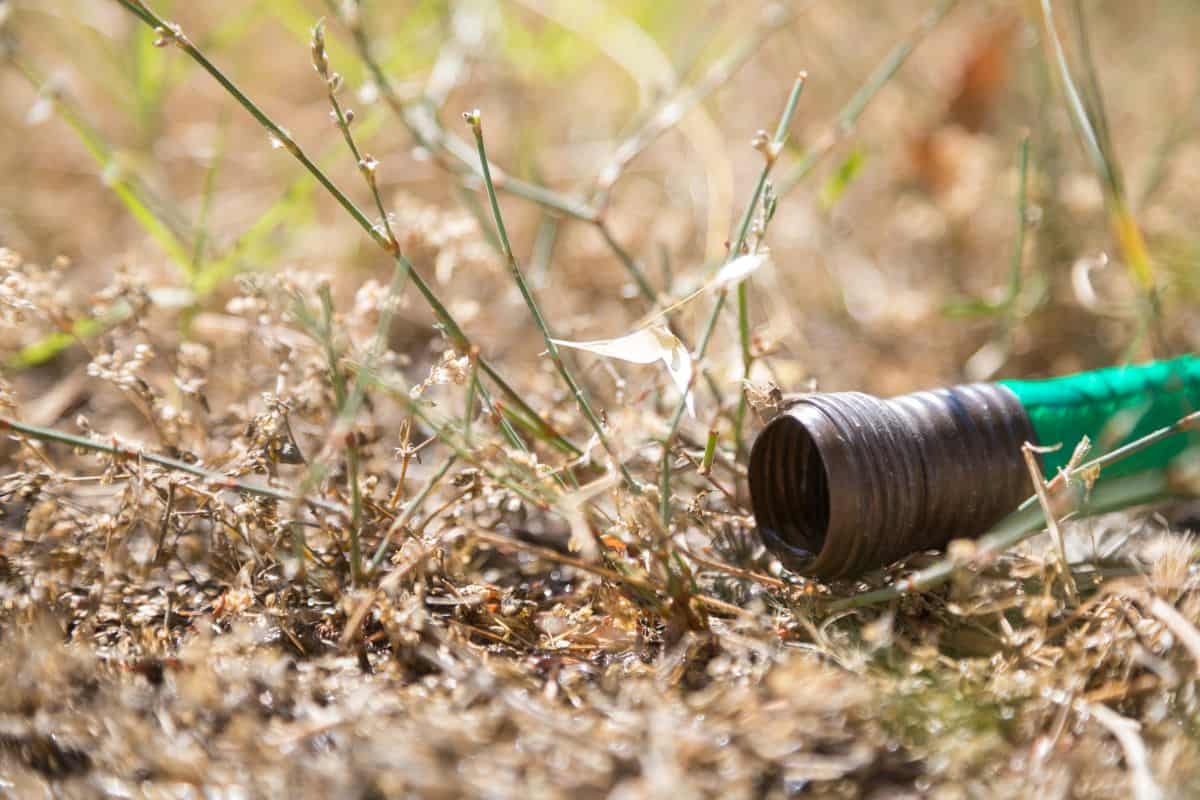If you have developed an interest in gardening, you may have wondered how to water your plants efficiently. You may have considered drip lines and want to know how to place them correctly. If you are thinking about this, you have come to the right place. We have researched how far apart drip lines should be placed to find an answer for you.
For a drip irrigation system to function properly, you need to put the drip lines 18 or 24 inches apart. Drip lines should only be placed in areas with plants, and you should avoid arranging the lines in weird geometrical patterns where plants don’t grow.
There are several things to know about drip lines and drip irrigation. We will help you with the information you're looking for, so keep reading to get details on how to use this watering system efficiently.

Efficient Way of Irrigation
Gardening is a wonderful hobby. It relieves stress and can provide a sustainable source of vegetables and fruits. Ensuring that plants get the nutrients that they need should not be too stressful.
To take care of your plants, watering is necessary. Drip irrigation is a more efficient way of watering your plants, wasting less water than other methods like sprinklers. Because of its effectiveness, it may be exempt from water limitations during drought.

It is important to note that the layout of each line and the spacing between emitters contribute to how drip irrigation functions efficiently.
The proper spacing for drip lines is to have them between 18 and 24 inches apart. This allows proper spacing of plants as well. Correctly spaced lines and emitter will carry the right volume of water into the plants.
Click here to see these emitters on Amazon.
Benefits Of Drip Line

The old fashion way of watering plants involves dragging the hose to different places in the garden. Though you may have gotten used to it, this is not efficient and it’s certainly daunting. Gardening should be a stress reliever, not the other way around.
Drip lines become an effective solution for watering plants. Apart from efficiency, there are more benefits to installing drip irrigation in your gardens.
It Makes Plants Healthier
When you set your drip lines to deploy water at the same time of the day, your plants get a consistent water supply. There is no chance of forgetting to water the plants.
Consistently watering the plants aids in root development. You’ll be surprised how healthy your plants will be when they get watered regularly.
It Prevents Plants From Drowning

Plants can drown from overwatering. With drip irrigation, you can control the amount of water to be deployed to your plants. Moreover, low-volume application of water ensures the roots get enough of what they need. Different timers can be set on different areas of the garden depending on the plants you have.
Fewer Weeds
Another advantage of installing drip lines is that the water goes directly to the plant’s roots, unlike sprinklers and hoses where the water goes everywhere. Because the water is concentrated in a certain area, the rows between plants stay dry, so there is a less possibility of weeds growing.
Prevents Plant Disease
Plants may contract some diseases if other parts come in contact with water. Since drip lines allow water to go directly to the roots, this won’t be a concern.
Can Be Installed Anywhere
If you have narrow gardens, or your garden has an unusual shape, you don’t need to worry. You can install the drip lines anywhere you want, as long as you adhere to the proper spacing.
Low Maintenance
This type of irrigation system, when installed correctly, is low maintenance and doesn't require a lot of labor. With these benefits, you don’t have to worry about going on vacation and leaving your plants to dry.
How to Space Emitters
Emitters should be placed over the plant’s root ball. The number of emitters surrounding each plant depends on how big the plant is. If a tree or shrub is big, you may need to install several emitters around it. In contrast, smaller plants require a small water flow so a single emitter may be enough.The idea is to place the emitters intermittently.
Moreover, the spacing of each emitter is also essential to the success of this irrigation system. There are different spacing required for different types of soil.
For example, in the sand, the emitter should be 12 inches apart. If you have clay in your garden, keep the distance between each emitter to 24 inches. In loam soils, the emitters should be 18 inches away from each other.
Do You Need To Bury Drip Lines?
Generally, drip lines or tubes are made of polyethylene tubes. These are designed to last long and can be buried. However, burying drip tubes is not recommended, even if they are designed that way.
The following reasons will tell you why burying the drip lines is a bad idea.
Rodents
Buried tubes can be chewed by rodents, and other animals living underground. Because you are not able to see it, you will not know any damage until it is too late to take action.
Clogging
When you keep the tubes above ground, you prevent them from being clogged by soil or other debris. In addition to the blockage, clogged debris can decrease the lifespan of the tubes.
It is also useful to see how the water is deployed to the roots, which you can't do if the tubes are buried.
Cut Water Supply
The soil’s weight can also squeeze the tube, which will result in damage. A damaged section of the tube or line will result in the overall inefficiency of the irrigation system.
If you think the drip lines are an eyesore, you can cover them with lighter mulch. Bear in mind though that you will still not be able to see if the drip lines are properly deploying water if you cover them.
Click here to see this drip line on Amazon.
Another way of hiding the tubes is by choosing tube colors that blend with the soil like brown or black so the line doesn’t stand out too much.
How Do You Keep Drip Lines Clean?
Although drip irrigation is fairly easy to maintain, it's important to keep it clean all the time. Contamination of water pathogens on drip irrigation can pose harm to your plants. You should clean the system before and after cultivation.
It is advisable to clean the tubes after cultivation because you need to use chemicals like chlorine, and nitric acid. Chlorine eliminates organic contamination while nitric acid cleans mineral contamination, but these cleaning agents are harmful to crops, so you'll want to avoid using them during the growing season.
Why Do Drip Lines Leak?

The life expectancy of a drip line is quite long because of the material used for it. However, there are many reasons why it’ll start to leak.
One reason was mentioned in the previous section – rodents chewing on tubes. This creates holes in the tubes that cause water to leak into areas where water is not needed.
Another reason could be that the tube connections are loose. Make sure that the connections are tightly plugged, but not too tight as it can also result in leakage. High water pressure can also lead to leaks as it stresses the tubes of your water system.
Blocked tubes can also trigger leaks. This is why cleaning the tubes is very important.
Can You Leave Drip Lines Out In The Winter?
Winter is a season to be concerned about if you have installed drip lines. The remaining water can freeze inside the tubes and can cause them to explode. However, this is easily fixed by preparation.
It is recommended to winterize your drip irrigation system before the first freeze. It only takes between 15 minutes to 1 hour to avoid damage. Winterizing is flushing all the water that is left in the system so nothing will freeze.
You should also make sure that the automatic valves are installed for draining the remaining water.
In Conclusion
The drip irrigation system is an efficient way of watering plants. If installed properly and spaced correctly, it’ll make your life easier and your crops more healthy.
The importance and benefits of drip lines and drip irrigation were discussed throughout the post. Now that you have an idea of the significant points of this system, you’d be more confident in trying this out and installing it in your garden.
If you found this post helpful, check out these other articles:


